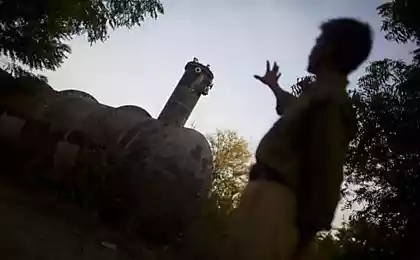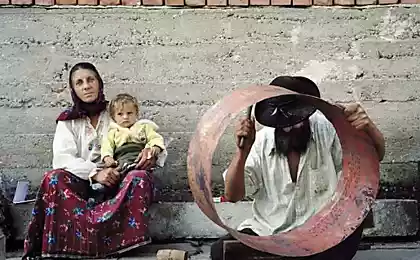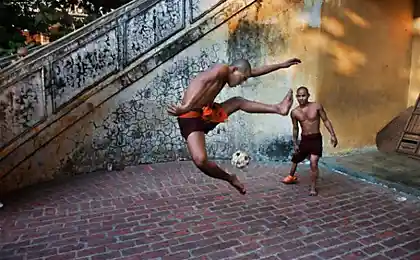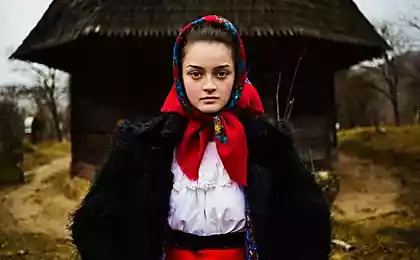1868
Caste. India.
Let's digress from Independence, the United States and turned his gaze to the still mysterious, ancient India and a diverse ...
Many letters and pictures.
Famous caste. We have all heard about the untouchables, but generally means that the caste society?

Sometimes it seems that we are so used to of XXI century with its equality, civil society and development of modern technologies that exist in the society of strict social classes perceived with amazement. But in India, people still live, belonging to a particular caste (which defines the scope of rights and duties), since the time that existed before our era.
In India, as in any other ancient state, once it appeared the rich class (priests, nobles, kings, warriors) and the poor (farmers, servants). The priests and nobles, to somehow explain to ordinary people such inequality, create the legend of the first man Purusha ("Man, man, spirit" - according to Hindu mythology, a creature from whose body the universe was created), which created the chief god Brahma and who He was the ancestor of all people.
These estates were called "Varna". Belonging to each of varna is determined solely by birth.
The classical model of the Hindu caste hierarchy:
Brahmins - the priests. Brahmins were always the most higher layer in the caste system, caste honorable; Now these people - mostly religious dignitaries, officials, teachers;
Kshatriyas - soldiers. The main objective is to protect the country Kshatriyas. Now, in addition to service in the armed forces, members of this caste can take a variety of administrative positions;
Vaishya - farmers. Engaged in cattle breeding and trade. Basically, it is - finance, banking, as Vaishya chose not to participate in the cultivation of the land directly;
Sudras - disadvantaged members of society that do not have full rights; peasant layer which initially was subordinated to that of other upper castes.
Presentation of the foundations of the ideal Indian society, fissile to "color" (caste), is described in the Ramayana and the laws of Manu (c. 500 BC. E.). According to Manu, the brahmins are generated from the mouth, the Kshatriyas - the hands, vaisyas - from the hips, the Sudras - from the feet of Brahma. In the allegorical sense, the myth speaks of the divine approval system.
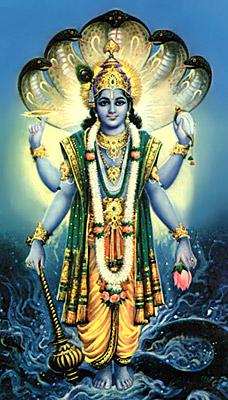
Brahmins - the highest caste of India. Serve as spiritual mentors, worked as an accountant and accountants, government officials, teachers, seize lands. They are not supposed to walk behind a plow or perform certain types of work related to manual labor; women from their environment can serve in the house, and landlords handle plots, but not to plow.
The members of each caste Brahmin marry only within their own circle, although possible marriage to the bride from a family belonging to the same podcast from the neighboring areas.
In choosing food Brahmin comply with many restrictions. He is not entitled to use food prepared outside the caste, but from the hands of the Brahmins can eat all the members of other castes. Some Brahmins family can not eat meat.

Kshatriyas are just behind the Brahmins in regard to ritual and their task is mainly to keep fighting, to protect the homeland. Today, classes are Kshatriya work in administering estates and served in various administrative positions, and in the army. Most Kshatriya consume meat, but permit marriage with a girl from a lower podcasts, but the woman in any case can not marry a man of her own podcasts below.

Vaishya - layers that are engaged in trade. Vaishya more strictly comply with the rules relating to food, and even more carefully trying to avoid ritual defilement. Traditional activities are vaisyas trade and banking, they tend to stay away from physical labor, but are sometimes included in the management of farms and rural landowners entrepreneurs who are not directly participating in the cultivation of the land.

Sudras - the peasant caste. They, because of their size and ownership of a large part of the local land, play an important role in addressing social and political issues in some areas. Sudras eat meat, permitted the marriage of widows and divorced women. The lower Sudras - the numerous podcasts, whose profession is strictly specialized. This caste potters, blacksmiths, carpenters, joiners, weavers, dairies, distillers, bricklayers, hairdressers, musicians, tanners (who sews the finished products - vydelanoy skin), butchers, scavengers, and many others.

The Untouchables - occupied the dirtiest work, often poor or very poor. They are outside the Hindu society. They are engaged in cleaning dead animals from streets and fields, restrooms, leather tanning, clean sanitation, garbage collectors work, laundresses, hired for the heaviest work in mines, construction sites, etc.
According to some interpretations, are at neprikasamye Sudras. In fact, they are not included in the four varna.
Untouchables are those to whom is entrusted the hard physical labor, for example - janitors and tanners. And yet - the fishermen, butchers, prostitutes, roving performers, street artisans. The most serious in their position in all ages was not so much poverty as social exclusion. The law forbade them to eat at a regular table, wearing elegant clothes, taking water from public wells, cultivate the land and to get education. It is believed that untouchables bear the "dirt" of his profession and, therefore, can "defile" his human touch or food, and their presence - home or temple.
Of course, almost every tradition - good or for ill - like respect is a rational explanation. In India, as you know, the issues of hygiene are matters of life and death. Those involved in the dirty work - the potential contagion hawkers. However, over time it has gone much further than just reasonable limitation of contacts. Thus, in some southern areas were declared impure not only touch, but even the shadow and the mere sight of an untouchable, and they were forbidden under pain of death to leave the house during the day.
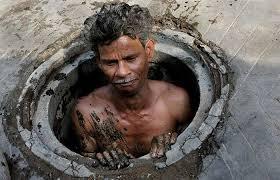
Why are these people for centuries dutifully obey this cruel laws of life? The answer lies in the genuine religiosity of the overwhelming majority of Indians. Over 80% of the population profess Hinduism, based on - the ideology of dharma. It is a multifaceted concept includes categories of morality, duty, law and defines the responsibilities of each person. Their implementation ensures happiness in the next life on earth. To achieve holiness it is not necessary to go to the monastery, indulging austerity and many hours of prayers. It is enough to "just" strictly follow his dharma, to go through the ancestors. On the contrary, failure of dharma leads to the suffering in the future life. Fear of them is so strong that it outweighs all the charms of equality.
This ideology is not simply allow the lower castes come to terms with their situation both given, but also explains its root cause. He was born an untouchable? So, a lot of sin in a previous life. If you humility and hard work will manage to atone for their sins, in future rebirths will be able to climb a little higher in the caste ladder.

It is noteworthy that caste as a social institution in society, there is widespread throughout India, but in every region it can be its own. Moreover, each caste contains many podcast (jati), making them truly countless number. All of this has even led to the fact that the census no longer taken into account caste, because every year their number is increasingly growing. For example, there are a caste of tailors (Darzi), jars (Dzhhinvar), scavengers (Bhangi) and even caste Brahmins living due alms (Bhatra).
Of course, the caste system in India today no longer have the importance which it attached to ancient times. Now comes a tendency to reduce the influence of caste, social classes on the life of the population. If earlier almost all determined by social background, it is now, for example, and the promotion of the service is possible due to the individual characteristics, abilities and skills of the person, and not just because of the birth.
External manifestation of caste is now almost nonexistent, especially in cities where caste out of fashion icons on the forehead and spread European suit. But as soon as people get to know closer - his last name, define the circle of acquaintances - they immediately learn about each other's caste. The fact is that the vast majority of names in India - a former caste designations. Bhattacharya, Dikshit, Gupta - necessarily members of the highest caste Brahmin. Singh - a member of a military caste Rajput, or Sikh. Gandhi - a member of the trading castes in Gujarat. Reddy - a member of the agricultural caste of Andhra.
But the main feature, which accurately marks every Indian, - the behavior of the interlocutor. If it higher caste, he will behave with exaggerated dignity, if lower - with exaggerated courtesy.
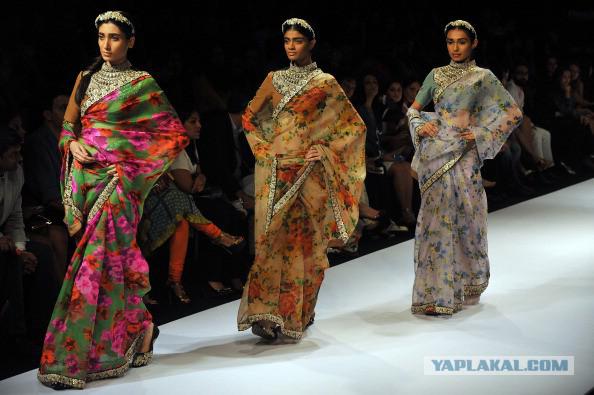
How, by the way, determined by what caste below and above which, especially in the modern world, and whether the caste division of the same sacred, like the old days?
There are many ways of classification, they are often built on the basis of the relationship of a particular caste Brahmins with.
Below are all of those on whom the Brahmin can not take anything. Above - those who can offer a Brahmin food prepared on the water. Then go to "clean" - those who can offer Brahmin water in a metal container, and, finally, the "most pure" who can drink from a Brahmin pottery.
So, the highest - the Brahmins? It would seem so, because they are the laws of Manu Varna highest. But ...
Indian sociologist De Souza asked the question about what is the highest caste, what next, and so on, the residents of two villages in Punjab. In the first village Brahmans put in the first place only the Brahmins. All other residents - by Jat (recall that caste is the main four, set) to the Untouchables - Scavengers - Brahmins placed in second place. At first it appeared landowners - the Jats. And merchants - Banja supported Masloboischykov - tёli generally pushed into third place Brahmins. On the second, they placed themselves.
In another village (where Brahmans are very poor, and one of them even landless laborer) even the Brahmins decided not to award the championship itself.
In the first place were the Jats. But if the whole village is placed on the second place of traders and the third Brahmins, the opinion of the Brahmins was divided. Many of them claim to second place, while others are admitted traders above him.
So, even the rule of the Brahmins and it turns out in fact fiction. (It should be recognized that lower the Brahmins lower than the second or third place no one dared: there is still the sacred books, where the Brahmins declared the incarnation of God on earth).
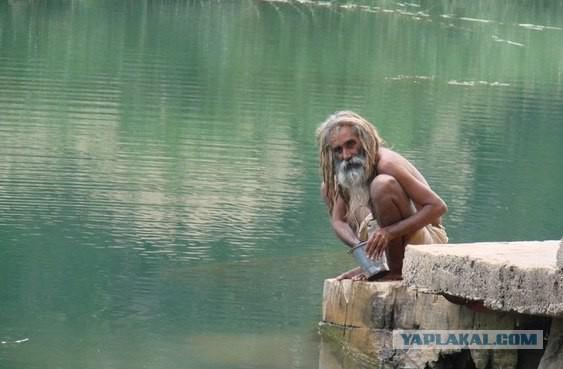
According to the constitution in 1950, every citizen of the Indian republic has equal rights irrespective of caste, race or religion. Coping of caste man to go to college or to the public service, to stand for election - a crime. The census count of caste missing. Cancellation of discrimination based on caste - one of the major social achievements of independent India.
The fight against untouchability Gandhi actively conducted. He began to call them Harijans (God's people). The struggle for the rights of the untouchables in 1930-40-ies led Bhimrao Ramji Ambedkar. He called the untouchable Dalits (oppressed). He managed to secure more in-laws in colonial India, and then in the constitution of independent India in 1950 the system by which members of the cast, brought in a special list ("Scheduled Castes"), fixes the quota of vacancies in the public service, seats in the legislature and in higher educational institutions. The practice of untouchability is constitutionally prohibited, and discrimination on the basis of caste is a criminal offense.
In the future, however, the way Ambedkar and Gandhi broke. The first wanted to destroy the caste system in principle, but suggested that the second fight with only its extreme manifestations. But in the late 1940s, the minister has had time to participate in the creation of the Constitution of India, his efforts there included articles protecting the rights of the lower castes. But even the law could not change the consciousness of the ancient society. Then Ambedkar decided on an extreme step and in 1956 persuaded several million untouchables renounce Hinduism and embrace Buddhism ...
However, in the movement for equal rights really is progress.
In the late 1990s - early 2000s all over India were Dalit political parties. 1998 elections showed that the consolidation of Dalits with other minorities led to the creation of a powerful bloc in many cities of India. Dalit women Mayawati became prime minister of Uttar Pradesh. In 2008, the first Dalit became a judge of the Supreme Court of India.
The most striking example is the emancipation of the Dalits KR Narayanan, President of India from 1997-2002 - from the untouchables.
Posted in [mergetime] 1398962847 [/ mergetime]
And yet, and yet ...
Yet one thing - the law, and the other - life. It is one thing - "progressive" government officials, the other - the villagers, for whom the main guide to action is still the law of the ancestors, dharmashastr. Yes, let the untouchables in the cafe, but for them there exists a separate utensils. Yes, they can be bought in shops, but in a special way: they say that they need, put money on the threshold and the threshold is taken away their goods. Yes, their children can now attend mainstream schools, however, do not have the right to pour the water itself - so as not to desecrate it - and have to wait until they are representative of the will of other castes. As a result, they are sometimes the clock can not quench your thirst.
Caste still has an enormous impact on the lives of every Indian, determining his place of residence not only in the countryside but also in the city (street or special districts), affecting the composition of the workers in the enterprise or institution, to nominate candidates for the elections, and so on. n.
There are more horrific cases.
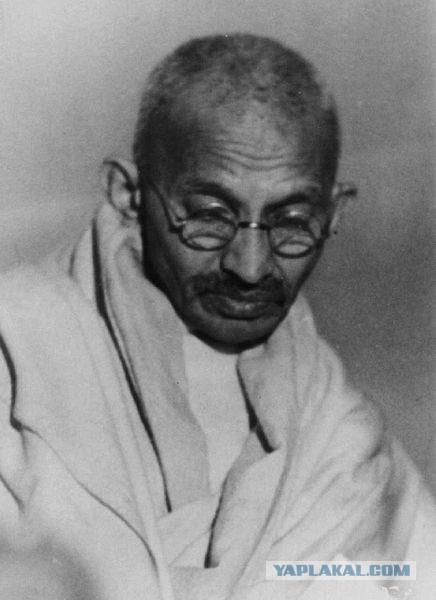
In the northern states to fight actively to defend the rights of higher-caste Dalits even create militias - Seine. Fanatical followers of traditions are simple - method of destruction, not sparing even pregnant women and children, dreaming about one thing: to wipe out over-zealous untouchable. The police reacted very sluggish. So, in 2002, he was arrested the leader of a large gang "Ranvir Sena." However, over the previous six years, she managed to make 36 attacks, in which 400 people were killed (in particular, in 1997, during a raid killed 60 untouchables).
In September 2002, five tanners caste dzhatavov skinned a cow is still alive, lying on the side of the road. When they saw a group of vysokokastovyh Indians attacked and killed their attackers. Were opened simultaneously two criminal cases - against the victims, according to the Law on the Limitation of killing cows, guarding all the sacred animals, except the sick and contagious - and against a group of persons on the article "murder." It is noteworthy that the first autopsy on the corpse of a cow was taken away, and only then - a body of people. However, officials said they only wanted to ascertain whether the cow actually alive at the time osvezhevaniya that would explain the actions of the crowd.
According to the non-governmental organization "Movement for Human Rights Education", located in Madras, on average, every hour two Dalits are attacked, three Dalit women are raped, two Dalits are murdered and two Dalit houses burned. In June 2008, armed thugs attacked the crowd in the city of Miapur (Bihar) on the people of the lower castes and shot 35 people, eight of whom were Dalits. Most minor claim to the rights of Dalits: Dalit registered as a candidate for the local council, a Dalit boy courting a girl from a higher caste Dalit use water from wells owned by the highest caste - could provoke violence.
The village of about forty Hayralandzhi vysokokastovyh Indians in front of the entire village and had no apparent motive waged a brutal massacre of the family of untouchables. They pulled out of the house of two women and two men, stripped them, broke their legs so they could not escape, and beaten with bicycle chains. And then we finished off with axes and abused bodies. The latter fact is, by the way, then disappeared from the indictment. Most likely, for political reasons - the authorities tried to somehow soften the brutality of what happened in the eyes of the public, to avoid mass demonstrations untouchable.
For what?
Thanks.
Source:
Many letters and pictures.
Famous caste. We have all heard about the untouchables, but generally means that the caste society?

Sometimes it seems that we are so used to of XXI century with its equality, civil society and development of modern technologies that exist in the society of strict social classes perceived with amazement. But in India, people still live, belonging to a particular caste (which defines the scope of rights and duties), since the time that existed before our era.
In India, as in any other ancient state, once it appeared the rich class (priests, nobles, kings, warriors) and the poor (farmers, servants). The priests and nobles, to somehow explain to ordinary people such inequality, create the legend of the first man Purusha ("Man, man, spirit" - according to Hindu mythology, a creature from whose body the universe was created), which created the chief god Brahma and who He was the ancestor of all people.
These estates were called "Varna". Belonging to each of varna is determined solely by birth.
The classical model of the Hindu caste hierarchy:
Brahmins - the priests. Brahmins were always the most higher layer in the caste system, caste honorable; Now these people - mostly religious dignitaries, officials, teachers;
Kshatriyas - soldiers. The main objective is to protect the country Kshatriyas. Now, in addition to service in the armed forces, members of this caste can take a variety of administrative positions;
Vaishya - farmers. Engaged in cattle breeding and trade. Basically, it is - finance, banking, as Vaishya chose not to participate in the cultivation of the land directly;
Sudras - disadvantaged members of society that do not have full rights; peasant layer which initially was subordinated to that of other upper castes.
Presentation of the foundations of the ideal Indian society, fissile to "color" (caste), is described in the Ramayana and the laws of Manu (c. 500 BC. E.). According to Manu, the brahmins are generated from the mouth, the Kshatriyas - the hands, vaisyas - from the hips, the Sudras - from the feet of Brahma. In the allegorical sense, the myth speaks of the divine approval system.

Brahmins - the highest caste of India. Serve as spiritual mentors, worked as an accountant and accountants, government officials, teachers, seize lands. They are not supposed to walk behind a plow or perform certain types of work related to manual labor; women from their environment can serve in the house, and landlords handle plots, but not to plow.
The members of each caste Brahmin marry only within their own circle, although possible marriage to the bride from a family belonging to the same podcast from the neighboring areas.
In choosing food Brahmin comply with many restrictions. He is not entitled to use food prepared outside the caste, but from the hands of the Brahmins can eat all the members of other castes. Some Brahmins family can not eat meat.

Kshatriyas are just behind the Brahmins in regard to ritual and their task is mainly to keep fighting, to protect the homeland. Today, classes are Kshatriya work in administering estates and served in various administrative positions, and in the army. Most Kshatriya consume meat, but permit marriage with a girl from a lower podcasts, but the woman in any case can not marry a man of her own podcasts below.

Vaishya - layers that are engaged in trade. Vaishya more strictly comply with the rules relating to food, and even more carefully trying to avoid ritual defilement. Traditional activities are vaisyas trade and banking, they tend to stay away from physical labor, but are sometimes included in the management of farms and rural landowners entrepreneurs who are not directly participating in the cultivation of the land.

Sudras - the peasant caste. They, because of their size and ownership of a large part of the local land, play an important role in addressing social and political issues in some areas. Sudras eat meat, permitted the marriage of widows and divorced women. The lower Sudras - the numerous podcasts, whose profession is strictly specialized. This caste potters, blacksmiths, carpenters, joiners, weavers, dairies, distillers, bricklayers, hairdressers, musicians, tanners (who sews the finished products - vydelanoy skin), butchers, scavengers, and many others.

The Untouchables - occupied the dirtiest work, often poor or very poor. They are outside the Hindu society. They are engaged in cleaning dead animals from streets and fields, restrooms, leather tanning, clean sanitation, garbage collectors work, laundresses, hired for the heaviest work in mines, construction sites, etc.
According to some interpretations, are at neprikasamye Sudras. In fact, they are not included in the four varna.
Untouchables are those to whom is entrusted the hard physical labor, for example - janitors and tanners. And yet - the fishermen, butchers, prostitutes, roving performers, street artisans. The most serious in their position in all ages was not so much poverty as social exclusion. The law forbade them to eat at a regular table, wearing elegant clothes, taking water from public wells, cultivate the land and to get education. It is believed that untouchables bear the "dirt" of his profession and, therefore, can "defile" his human touch or food, and their presence - home or temple.
Of course, almost every tradition - good or for ill - like respect is a rational explanation. In India, as you know, the issues of hygiene are matters of life and death. Those involved in the dirty work - the potential contagion hawkers. However, over time it has gone much further than just reasonable limitation of contacts. Thus, in some southern areas were declared impure not only touch, but even the shadow and the mere sight of an untouchable, and they were forbidden under pain of death to leave the house during the day.

Why are these people for centuries dutifully obey this cruel laws of life? The answer lies in the genuine religiosity of the overwhelming majority of Indians. Over 80% of the population profess Hinduism, based on - the ideology of dharma. It is a multifaceted concept includes categories of morality, duty, law and defines the responsibilities of each person. Their implementation ensures happiness in the next life on earth. To achieve holiness it is not necessary to go to the monastery, indulging austerity and many hours of prayers. It is enough to "just" strictly follow his dharma, to go through the ancestors. On the contrary, failure of dharma leads to the suffering in the future life. Fear of them is so strong that it outweighs all the charms of equality.
This ideology is not simply allow the lower castes come to terms with their situation both given, but also explains its root cause. He was born an untouchable? So, a lot of sin in a previous life. If you humility and hard work will manage to atone for their sins, in future rebirths will be able to climb a little higher in the caste ladder.

It is noteworthy that caste as a social institution in society, there is widespread throughout India, but in every region it can be its own. Moreover, each caste contains many podcast (jati), making them truly countless number. All of this has even led to the fact that the census no longer taken into account caste, because every year their number is increasingly growing. For example, there are a caste of tailors (Darzi), jars (Dzhhinvar), scavengers (Bhangi) and even caste Brahmins living due alms (Bhatra).
Of course, the caste system in India today no longer have the importance which it attached to ancient times. Now comes a tendency to reduce the influence of caste, social classes on the life of the population. If earlier almost all determined by social background, it is now, for example, and the promotion of the service is possible due to the individual characteristics, abilities and skills of the person, and not just because of the birth.
External manifestation of caste is now almost nonexistent, especially in cities where caste out of fashion icons on the forehead and spread European suit. But as soon as people get to know closer - his last name, define the circle of acquaintances - they immediately learn about each other's caste. The fact is that the vast majority of names in India - a former caste designations. Bhattacharya, Dikshit, Gupta - necessarily members of the highest caste Brahmin. Singh - a member of a military caste Rajput, or Sikh. Gandhi - a member of the trading castes in Gujarat. Reddy - a member of the agricultural caste of Andhra.
But the main feature, which accurately marks every Indian, - the behavior of the interlocutor. If it higher caste, he will behave with exaggerated dignity, if lower - with exaggerated courtesy.

How, by the way, determined by what caste below and above which, especially in the modern world, and whether the caste division of the same sacred, like the old days?
There are many ways of classification, they are often built on the basis of the relationship of a particular caste Brahmins with.
Below are all of those on whom the Brahmin can not take anything. Above - those who can offer a Brahmin food prepared on the water. Then go to "clean" - those who can offer Brahmin water in a metal container, and, finally, the "most pure" who can drink from a Brahmin pottery.
So, the highest - the Brahmins? It would seem so, because they are the laws of Manu Varna highest. But ...
Indian sociologist De Souza asked the question about what is the highest caste, what next, and so on, the residents of two villages in Punjab. In the first village Brahmans put in the first place only the Brahmins. All other residents - by Jat (recall that caste is the main four, set) to the Untouchables - Scavengers - Brahmins placed in second place. At first it appeared landowners - the Jats. And merchants - Banja supported Masloboischykov - tёli generally pushed into third place Brahmins. On the second, they placed themselves.
In another village (where Brahmans are very poor, and one of them even landless laborer) even the Brahmins decided not to award the championship itself.
In the first place were the Jats. But if the whole village is placed on the second place of traders and the third Brahmins, the opinion of the Brahmins was divided. Many of them claim to second place, while others are admitted traders above him.
So, even the rule of the Brahmins and it turns out in fact fiction. (It should be recognized that lower the Brahmins lower than the second or third place no one dared: there is still the sacred books, where the Brahmins declared the incarnation of God on earth).

According to the constitution in 1950, every citizen of the Indian republic has equal rights irrespective of caste, race or religion. Coping of caste man to go to college or to the public service, to stand for election - a crime. The census count of caste missing. Cancellation of discrimination based on caste - one of the major social achievements of independent India.
The fight against untouchability Gandhi actively conducted. He began to call them Harijans (God's people). The struggle for the rights of the untouchables in 1930-40-ies led Bhimrao Ramji Ambedkar. He called the untouchable Dalits (oppressed). He managed to secure more in-laws in colonial India, and then in the constitution of independent India in 1950 the system by which members of the cast, brought in a special list ("Scheduled Castes"), fixes the quota of vacancies in the public service, seats in the legislature and in higher educational institutions. The practice of untouchability is constitutionally prohibited, and discrimination on the basis of caste is a criminal offense.
In the future, however, the way Ambedkar and Gandhi broke. The first wanted to destroy the caste system in principle, but suggested that the second fight with only its extreme manifestations. But in the late 1940s, the minister has had time to participate in the creation of the Constitution of India, his efforts there included articles protecting the rights of the lower castes. But even the law could not change the consciousness of the ancient society. Then Ambedkar decided on an extreme step and in 1956 persuaded several million untouchables renounce Hinduism and embrace Buddhism ...
However, in the movement for equal rights really is progress.
In the late 1990s - early 2000s all over India were Dalit political parties. 1998 elections showed that the consolidation of Dalits with other minorities led to the creation of a powerful bloc in many cities of India. Dalit women Mayawati became prime minister of Uttar Pradesh. In 2008, the first Dalit became a judge of the Supreme Court of India.
The most striking example is the emancipation of the Dalits KR Narayanan, President of India from 1997-2002 - from the untouchables.
Posted in [mergetime] 1398962847 [/ mergetime]
And yet, and yet ...
Yet one thing - the law, and the other - life. It is one thing - "progressive" government officials, the other - the villagers, for whom the main guide to action is still the law of the ancestors, dharmashastr. Yes, let the untouchables in the cafe, but for them there exists a separate utensils. Yes, they can be bought in shops, but in a special way: they say that they need, put money on the threshold and the threshold is taken away their goods. Yes, their children can now attend mainstream schools, however, do not have the right to pour the water itself - so as not to desecrate it - and have to wait until they are representative of the will of other castes. As a result, they are sometimes the clock can not quench your thirst.
Caste still has an enormous impact on the lives of every Indian, determining his place of residence not only in the countryside but also in the city (street or special districts), affecting the composition of the workers in the enterprise or institution, to nominate candidates for the elections, and so on. n.
There are more horrific cases.

In the northern states to fight actively to defend the rights of higher-caste Dalits even create militias - Seine. Fanatical followers of traditions are simple - method of destruction, not sparing even pregnant women and children, dreaming about one thing: to wipe out over-zealous untouchable. The police reacted very sluggish. So, in 2002, he was arrested the leader of a large gang "Ranvir Sena." However, over the previous six years, she managed to make 36 attacks, in which 400 people were killed (in particular, in 1997, during a raid killed 60 untouchables).
In September 2002, five tanners caste dzhatavov skinned a cow is still alive, lying on the side of the road. When they saw a group of vysokokastovyh Indians attacked and killed their attackers. Were opened simultaneously two criminal cases - against the victims, according to the Law on the Limitation of killing cows, guarding all the sacred animals, except the sick and contagious - and against a group of persons on the article "murder." It is noteworthy that the first autopsy on the corpse of a cow was taken away, and only then - a body of people. However, officials said they only wanted to ascertain whether the cow actually alive at the time osvezhevaniya that would explain the actions of the crowd.
According to the non-governmental organization "Movement for Human Rights Education", located in Madras, on average, every hour two Dalits are attacked, three Dalit women are raped, two Dalits are murdered and two Dalit houses burned. In June 2008, armed thugs attacked the crowd in the city of Miapur (Bihar) on the people of the lower castes and shot 35 people, eight of whom were Dalits. Most minor claim to the rights of Dalits: Dalit registered as a candidate for the local council, a Dalit boy courting a girl from a higher caste Dalit use water from wells owned by the highest caste - could provoke violence.
The village of about forty Hayralandzhi vysokokastovyh Indians in front of the entire village and had no apparent motive waged a brutal massacre of the family of untouchables. They pulled out of the house of two women and two men, stripped them, broke their legs so they could not escape, and beaten with bicycle chains. And then we finished off with axes and abused bodies. The latter fact is, by the way, then disappeared from the indictment. Most likely, for political reasons - the authorities tried to somehow soften the brutality of what happened in the eyes of the public, to avoid mass demonstrations untouchable.
For what?
Thanks.
Source:
